The great English landscape architect Sir Geoffrey Jellicoe got it right. What’s past is past. But while it is over and done with, the past can’t be ignored. Instead, Jellicoe said, we should “ponder on the past not as the past but as a pointer to the future.”
In troubled political times, this sounds like good advice. It’s equally good advice when applied to the land.
When I began to work on the garden at Glen Villa some twenty years ago, history was the principle that guided me and it continues to be a powerful element, generating ideas and actions. If looking back were my only motivation, though, I doubt I’d be satisfied. Looking forward matters. And the question I’ve been asking myself more and more often in recent days is this: how has the past shaped the present landscape at Glen Villa — and perhaps more sigificantly — how do my actions today shape its future?
Several decades ago, my sister-in-law arranged through a government program to have trees planted on land that once had been farmed. Remnants of that farming history remained then, and still remain today. Most prominent is the foundation of a building, tilting earthwards more and more each year.
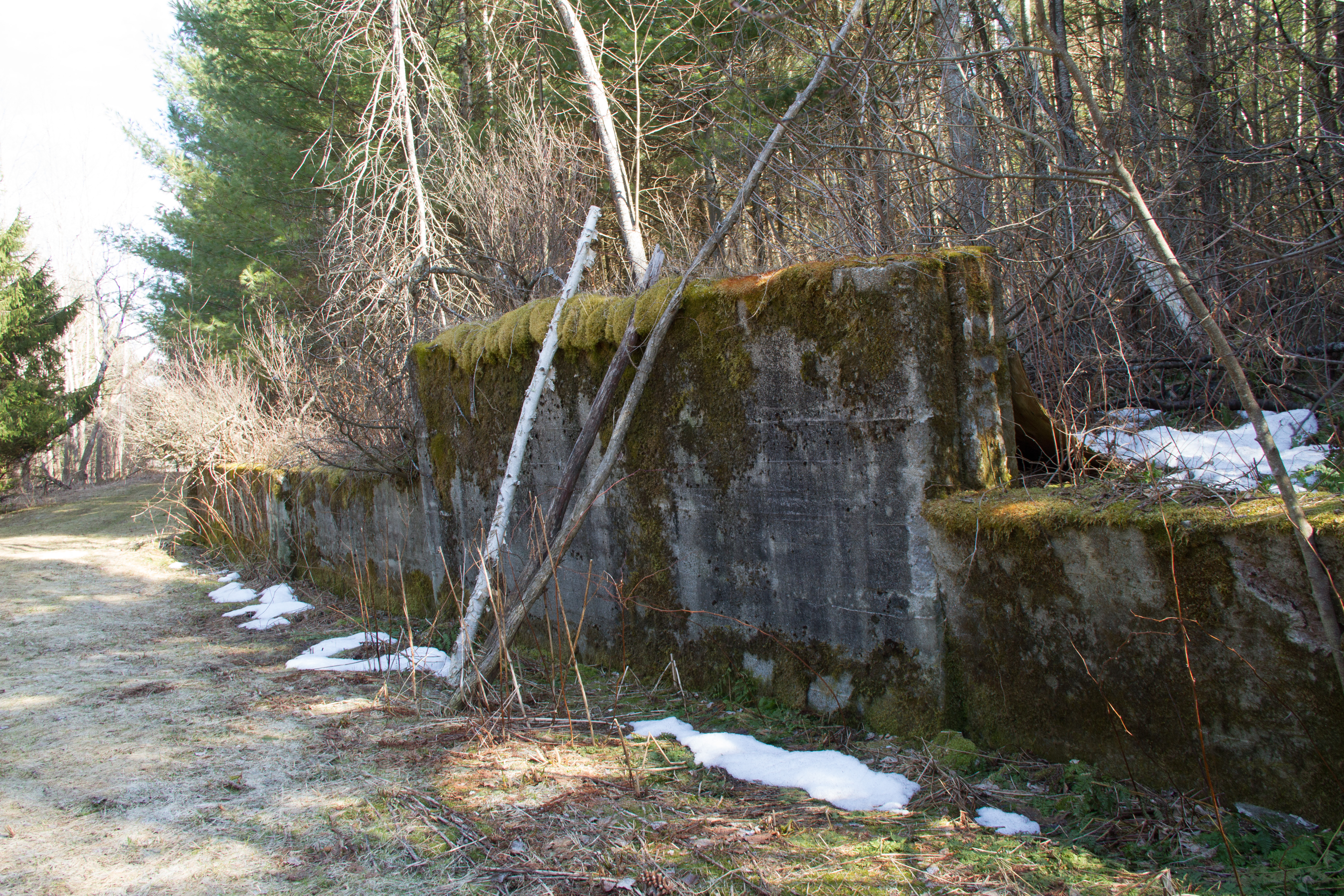
I remember only vaguely the barn it was part of. I don’t remember at all the other sign of the farm-that-was, a moss-covered stone wall, now collapsing and overgrown with trees, that once divided two plowed fields.
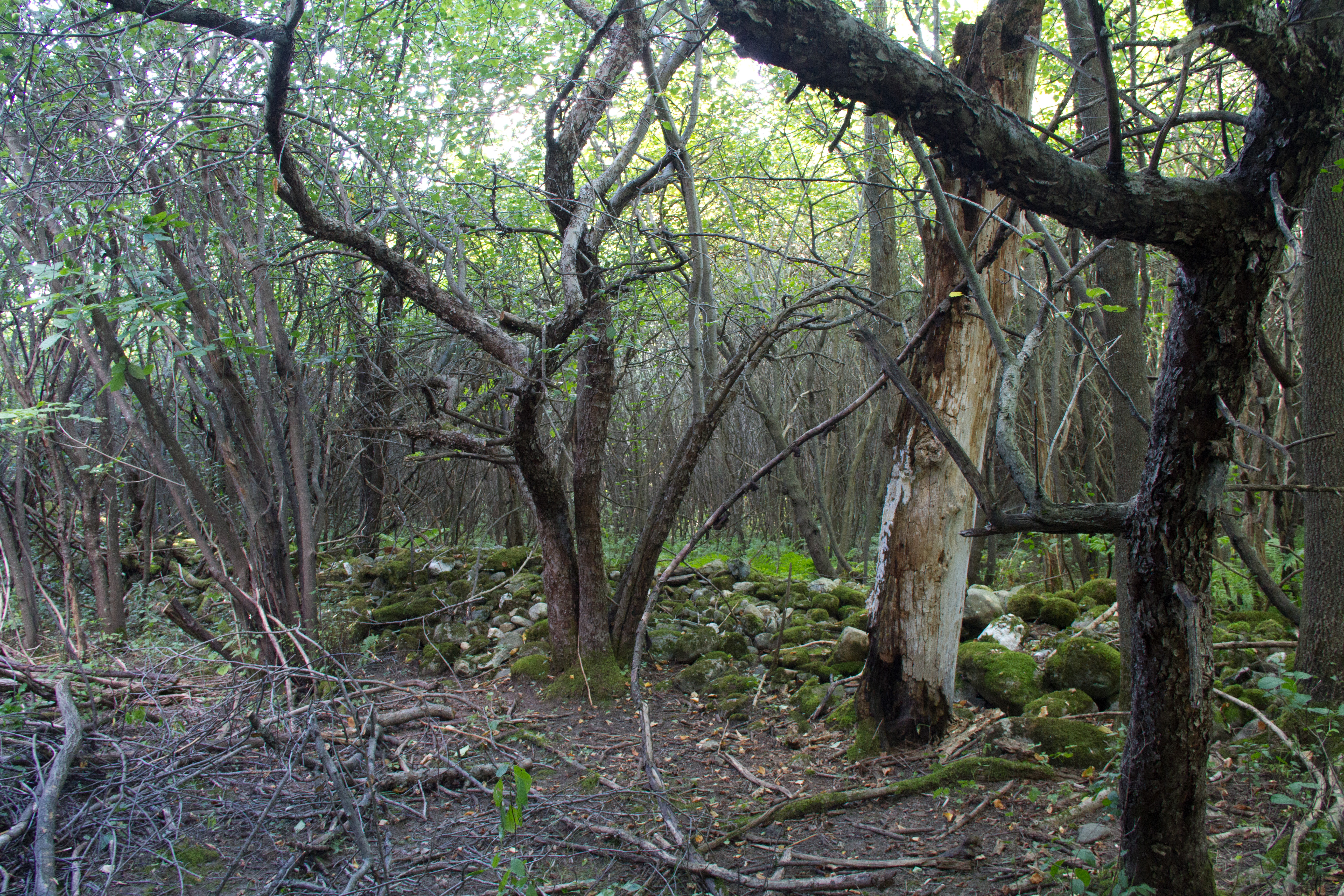
Once I dreamed of exposing the length of this wall and planting sunny spots with lilac bushes. I doubt this will ever happen. but wouldn’t it be beautiful?
Sometime in the 1980s, the fields were harrowed and prepared for trees to be planted. Spruce and pine seedlings were mechanically added in tidy rows in one area, and oaks and a few black walnut trees in another. Over the years the hardwoods have grown tall and thin.
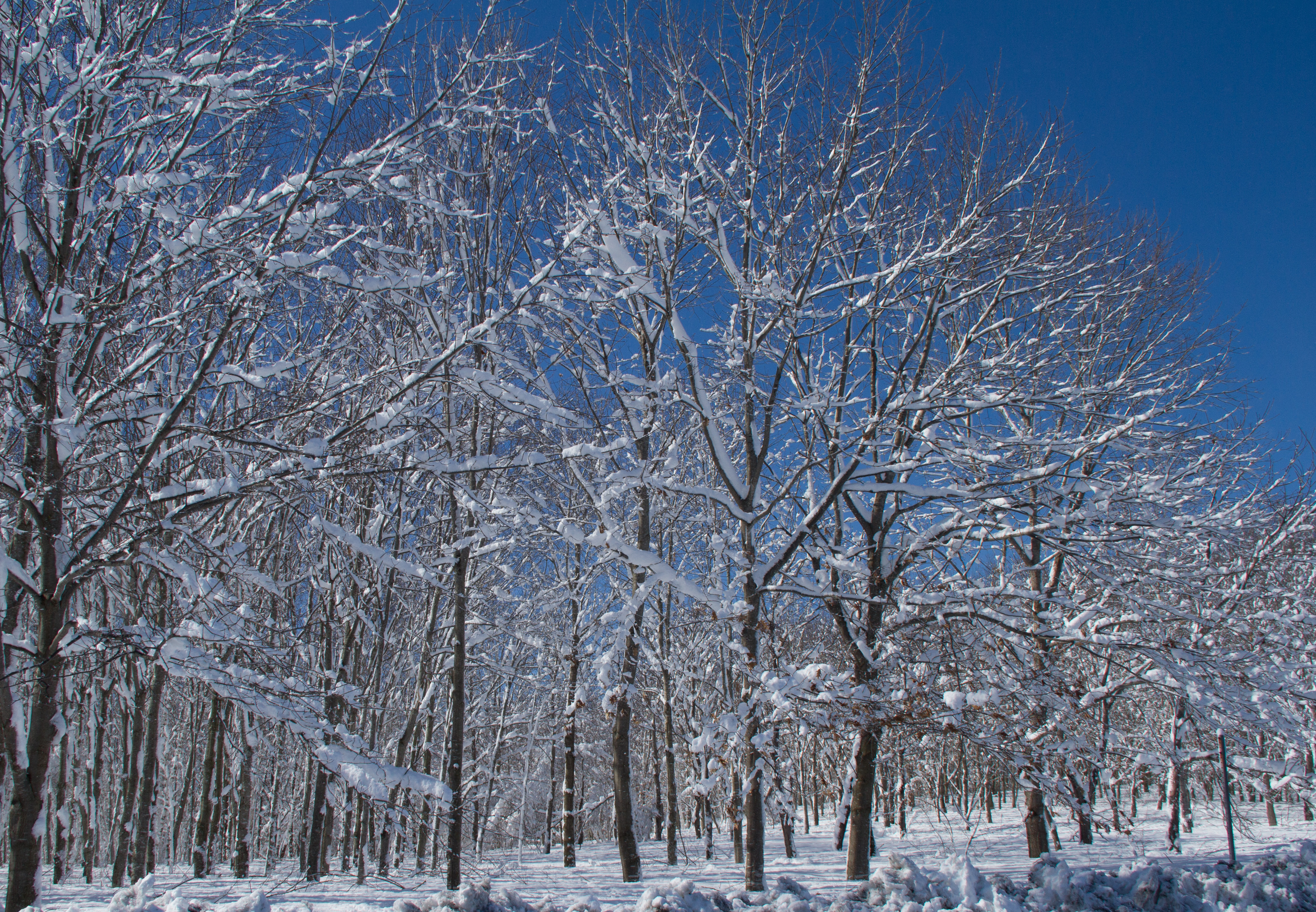
The oaks look like they’ve been iced with snow. Scenes like this are typical of Quebec’s Eastern Townships in the winter.
The softwoods have branched out. Now they are a forest, beautifully atmospheric in some lights …
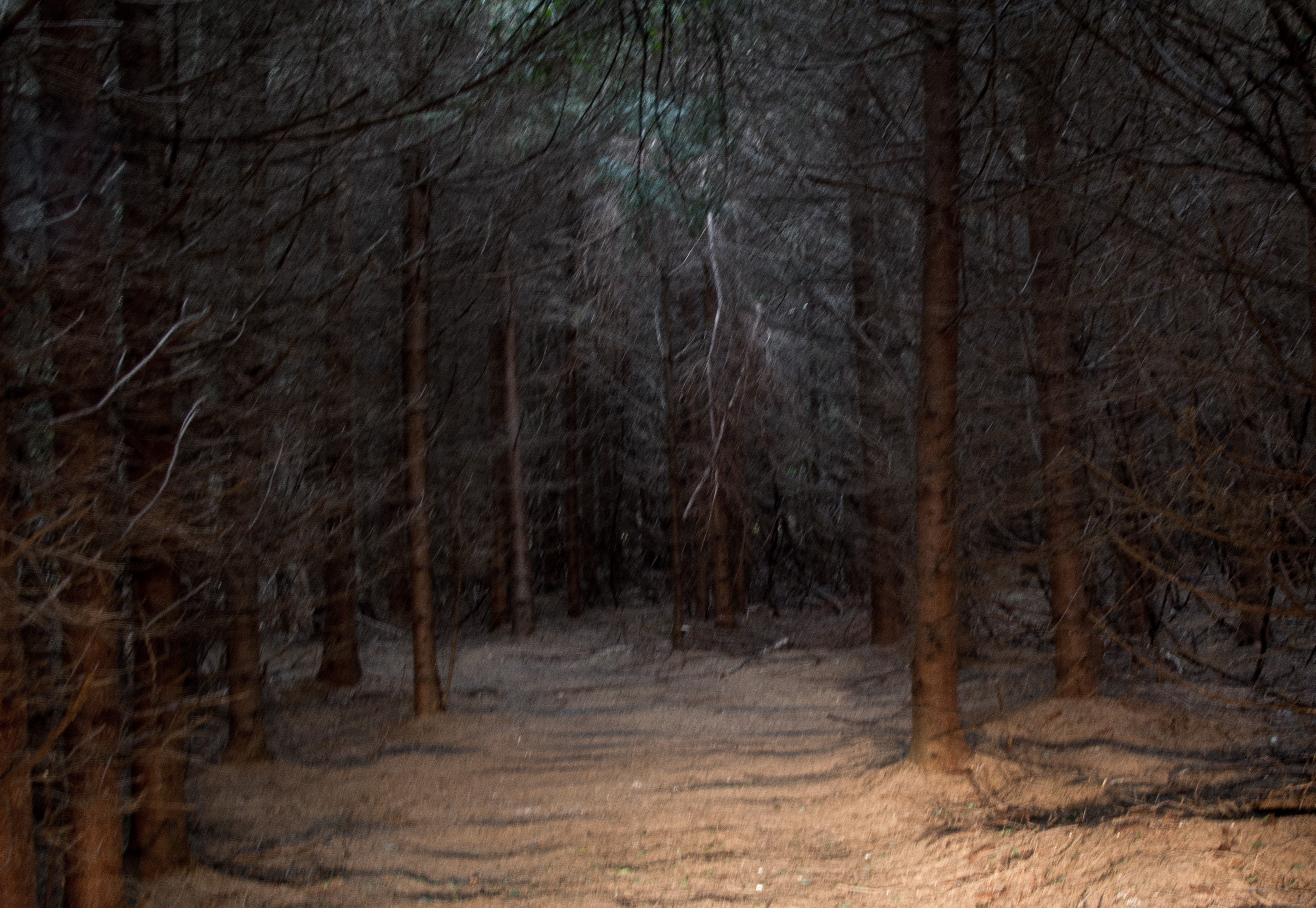
Believe it or not, this photo was not taken in winter but in mid summer.
… and simply dark in others, even when shafts of light struggle to break through.
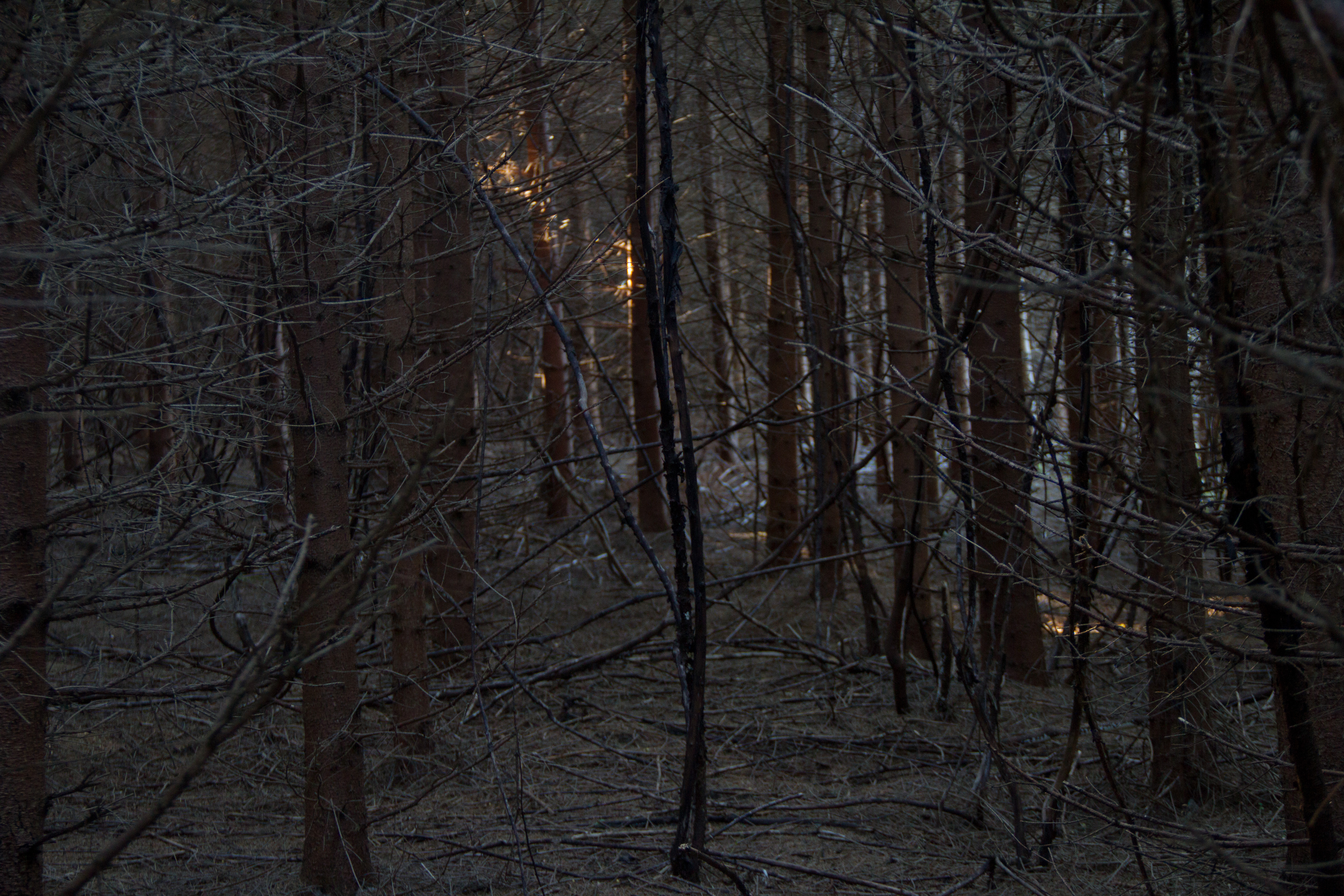
Branches that scratch and catch on clothes make it difficult to walk through the spruce trees except on the path we cut.
Over the years I’ve walked this land hundreds of times, by myself and with others.
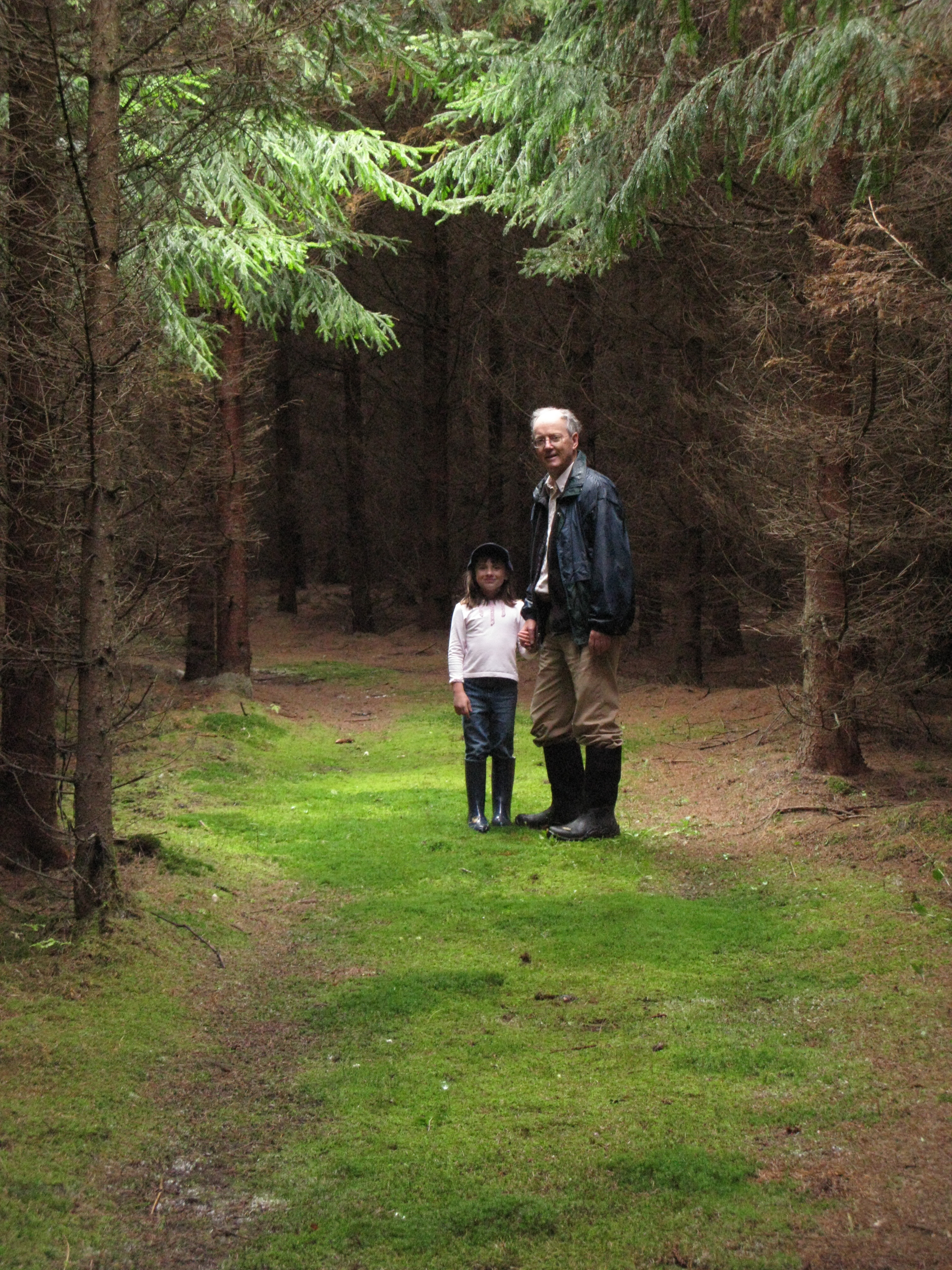
This photo of my husband and our oldest grandchild was taken 11 years ago. I love remembering that particular day and the people we were then.
The trees were planted to be cut and this year, for the first time, we began to do that. We aren’t clear-cutting the area but removing selectively, taking down dead trees along with the largest of the living. Jacques Gosselin and Ken Kelso, the two men who I consider my right and left hands, choose which trees to cut, limbing them up and burning small side branches as they go.

Once Jacques and Ken remove the side branches, they cut the trunk into the 8 or 12 foot lengths that sawmills are looking for.
The fire is a nice source of warmth on cold days …
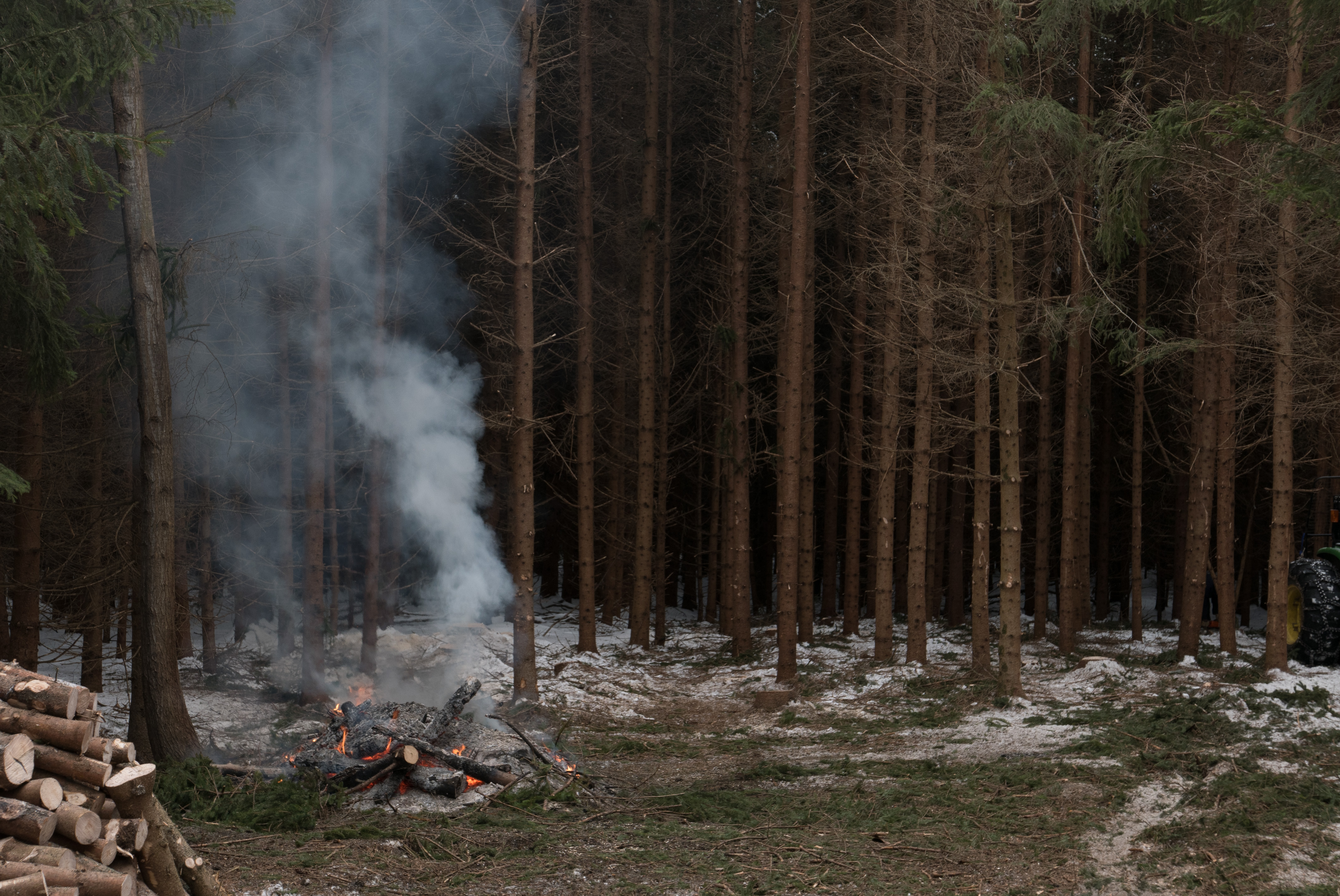
The fire never gets out of control and the surrounding woods are not threatened.
… and the smoke it produces streaks the air.
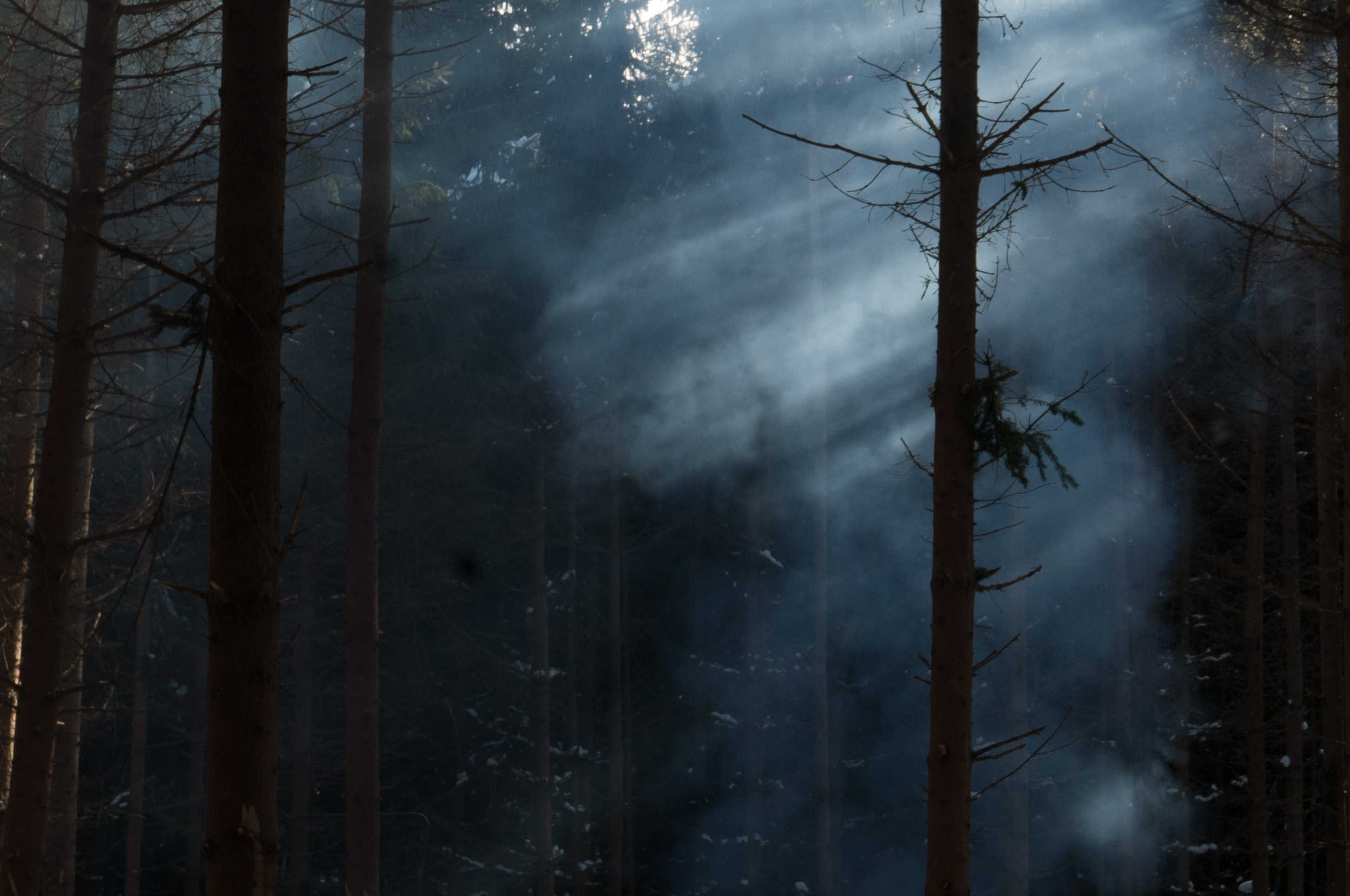
Smoke lit by the sun transforms darkness into romance.
Cutting these trees is not a money-making project. By the time salaries are paid and the cost of equipment and transport to the sawmill are taken into account, we barely break even. But making money isn’t the purpose. Making the forest a more beautiful and more usable space is.
The rows that were planted 30 or 40 years ago are still visible in most areas, and loosening that straitjacket is one of my aims.
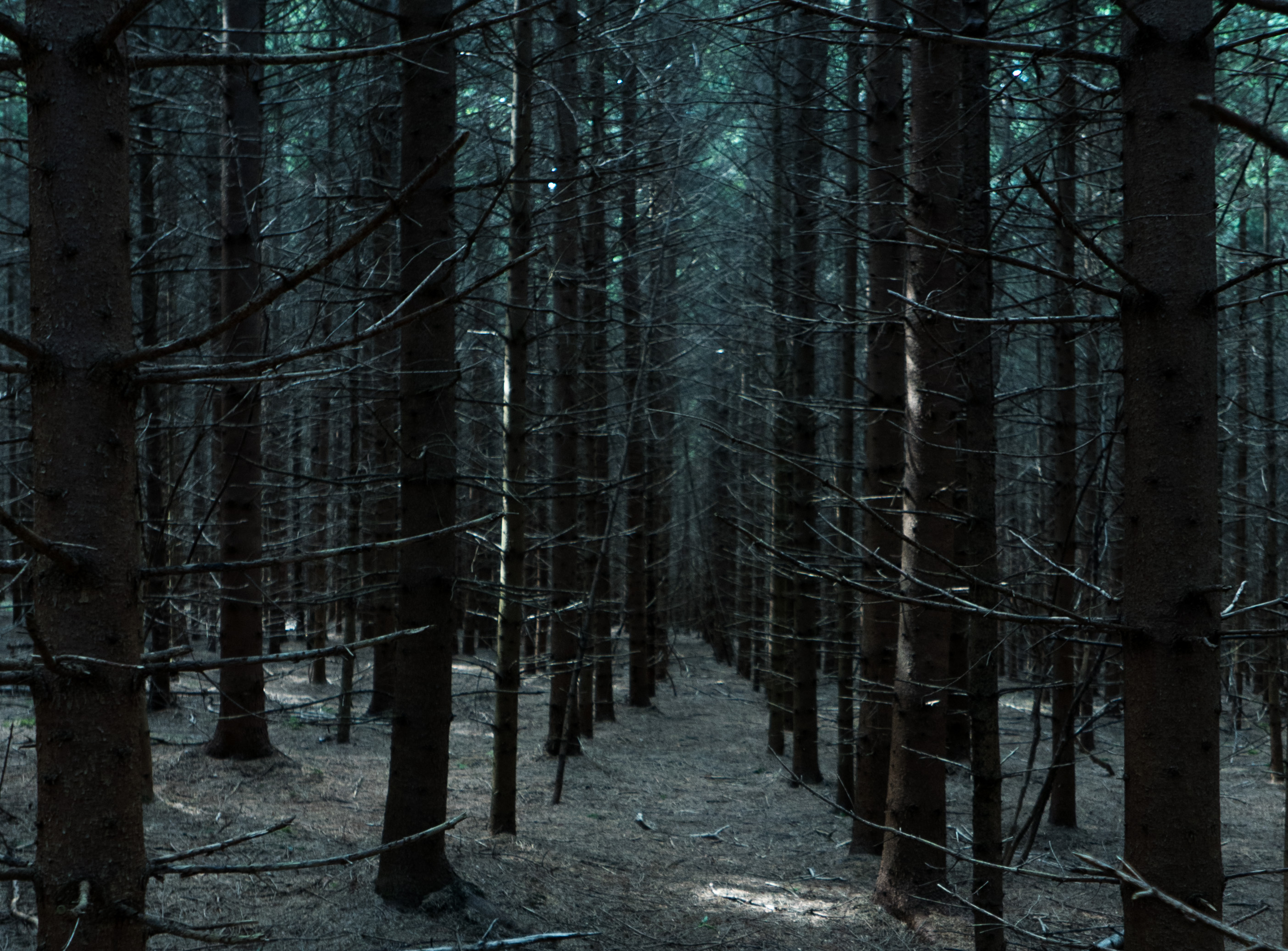
Straight rows are unnatural in a forest.
Removing even a few large trees lets in more light which means that smaller trees will grow more quickly. And because the light is uneven, some will grow more quickly than others, beginning the process of letting the woods find their own way forward.
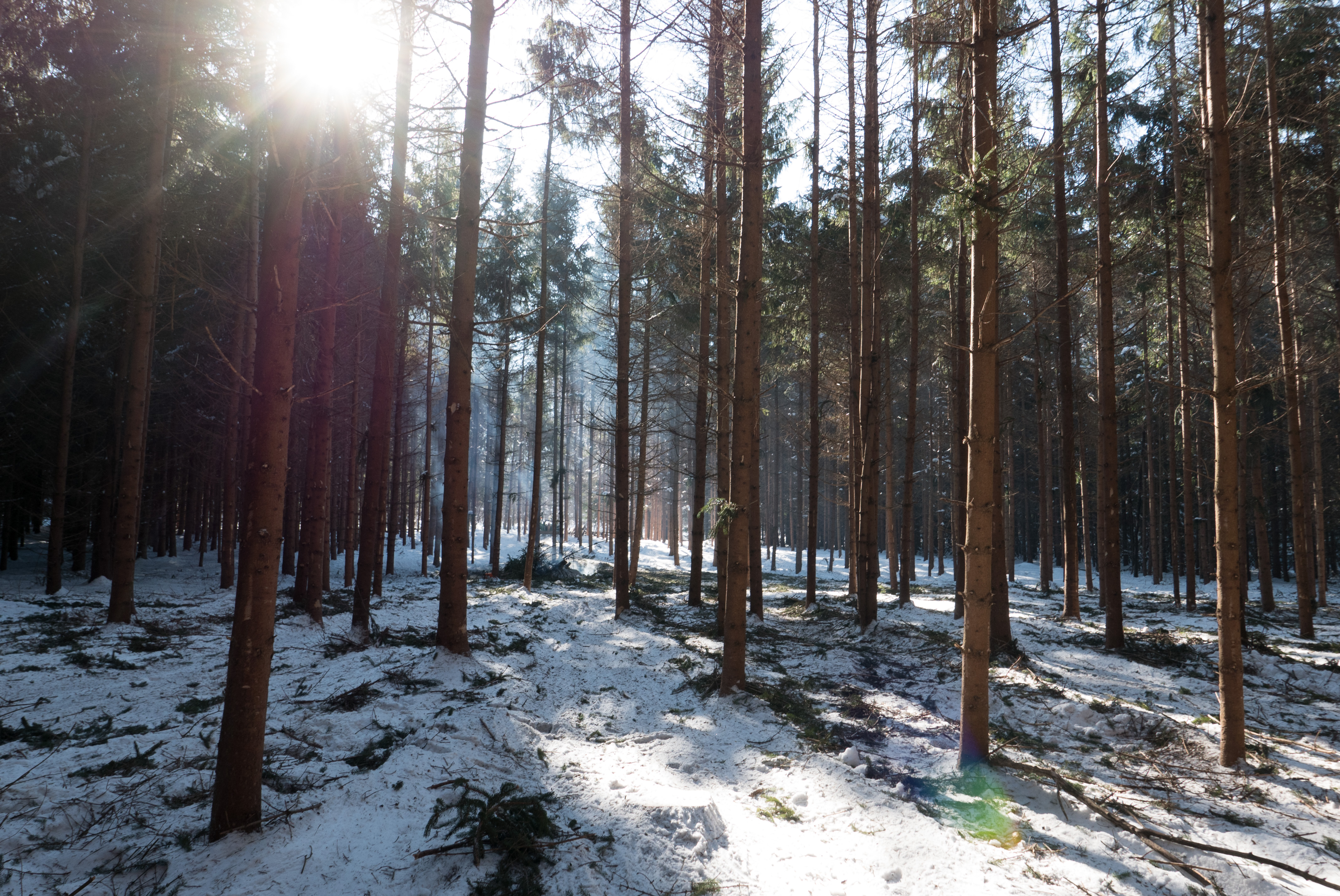
More trees have been cut in this section than in most but even here, trees will begin to fill in the gaps in a year or two.
Jacques and Ken drag the bare tree trunks out of the woods and divide them into piles by length, 8 or 12 feet long. In a week or two the wood will be at the sawmill where it will be sawed into boards.
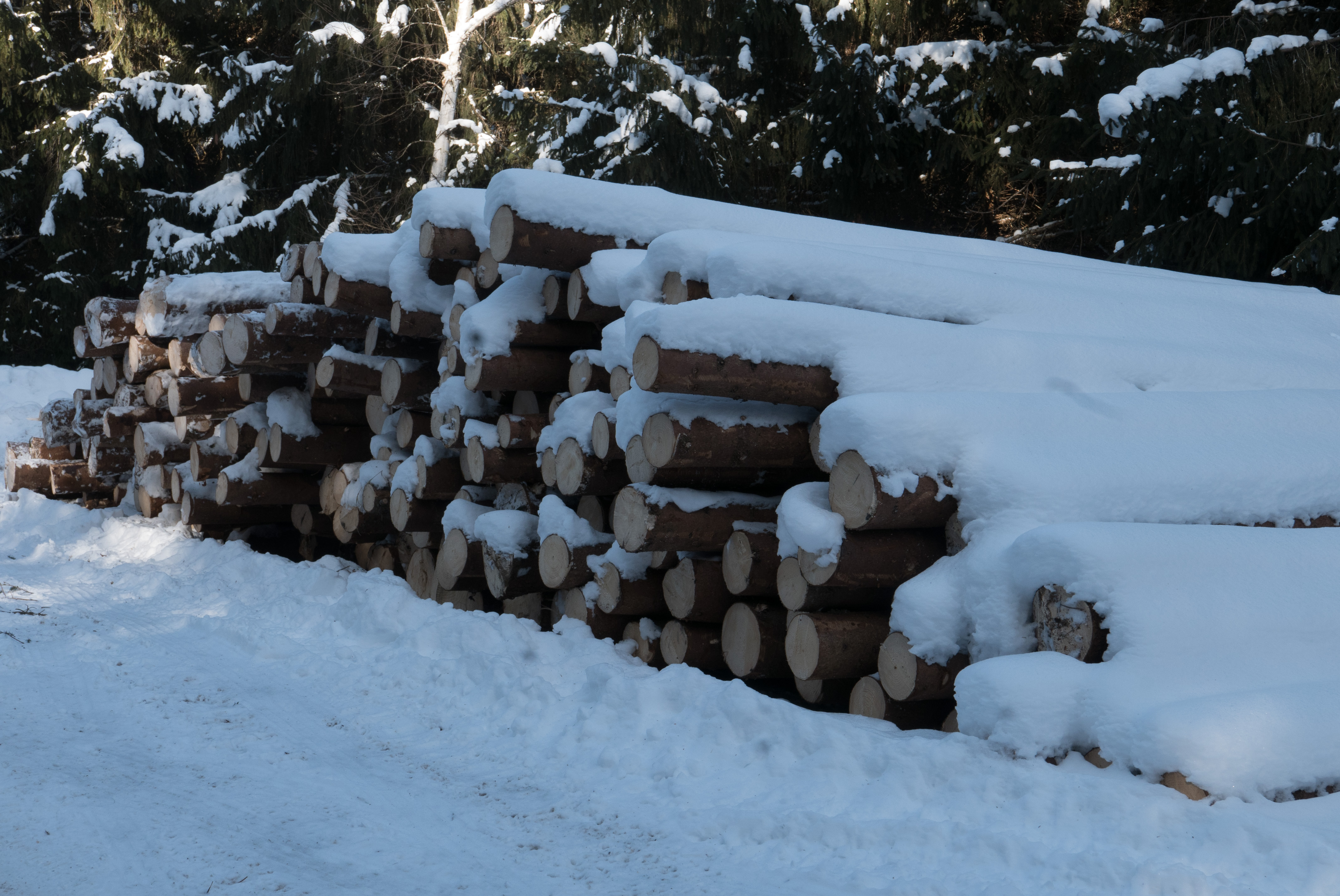
Snow caps the piled up tree trunks.
Seeing the tidy stacks, I ask myself a variation of the question I started with. What effect do my actions have on the future? Am I making the land more usable by cutting these trees? Am I making the forest more beautiful? Biologists say that the forest knows how to take care of itself, but this isn’t a natural forest, it is an artificial construct. So I hope the effects of my actions will be positive. Only time will tell.






This is a very good explanation of both how and why wood plantations should be managed.
Thank you Pat